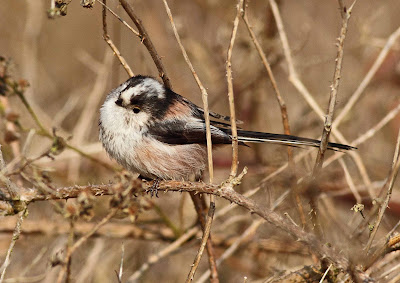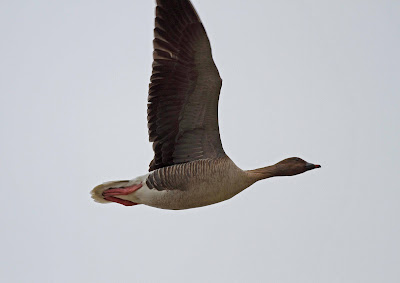I haven’t had a car this last 2 days so my time has been restricted Kingsdown and the cliff top.
Wednesday started well with 2 long tailed tits performing well for the camera in the scrub near just south of the Zetland.
 |
| Long-tailed tit |
The rifle range had the normal residents, a pair of linnets, a pair of kestrels but little else of interest until I reached the far end.
I was talking to a guy who was the lead singer of a northern band called Protocol 5 (they were recording down here) when a black redstart appeared in the hole. It didn’t hang about but the lead singer was impressed as he’d never even heard of a black redstart let alone see one. Also in the hole was a not so impressive rock pipit.
After that I walked the cliff top to Hope Point seeing a peregrine drift past then disappear out to sea but in reality it was pretty quiet - though I did find a yellow hammer at Hope point and a couple of swallows went past but that was the only viz mig.
 |
| Yellow Hammer |
Today followed the same routine with pretty much the same birds (amazing or what?). The black redstart dropped into the hole after I’d been standing around for 10 minutes watching 2 rock pipits and I managed some very distant record shots. (I assume it is a young male as the wings are still brownish with no sign of a white pannel and the undertail coverts are poorly coloured.) He then flew up the cliff face and disappeared over the top. I followed.
 |
| Black redstart |
Amazingly I found the bird on the cliff top but it was in someone’s garden. Pointing the camera into someone else’s property is not the best thing to do at 8 o'clock in the morning but I grabbed a couple of hurried shots before quickly moving on:
 |
| Black redstart |
I’ll let you decide what the sculpture is.
It was about this time that the wind got up, the temperature dropped and a haze started descending. I only mention it because all of a sudden some viz mig started with 70-odd chaffinch moving past in the next 30 minutes along with a similar number of un-identified dots (3 of which I think were repolls), oh and another swallow.
At Hope point I amused myself trying to photograph linnets – there were around 20 of them there and they spent their time either singing from the tops of twigs then disappearing as a flock only to return a few minutes later. They would never let me get close though.
 |
| Linnet - take off. |
On the return leg and as I was by the golf club car park 2 red kites drifted north, circled a few times over the old scout camp and had a skirmish before one flew off SW.
 |
| Red Kites |
The second went north and circled over the village for a couple of minutes gaining height before it too disappeared off SW (at about 10.30 for anyone interested).
Finally, as I was putting my gear into the car, one of the kestrels drifted overhead and tried to make a deposit on me before disappearing onto the cliff face.
 |
| Kestrel - luckily it's aim was off. |
I don’t know what is going on with the kestrels but they have been extremely skittish this last week or so disappearing before I get within 60-70 yards of them. Now if only I had some Eau d'Ashton, a unique bird attracting deodorant Steve's had fomulated, then perhaps I'd get close enough for some decent pictures.






































